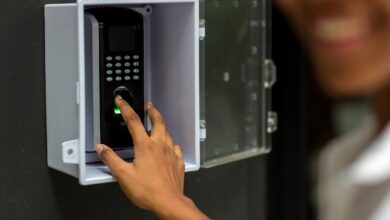
Laboratory hotplates are indispensable tools in scientific research and experimentation, providing precise heating for a wide range of applications. From simple heating tasks to complex experiments requiring precise temperature control, choosing the right hotplate is crucial for achieving accurate and reliable results. This guide aims to provide a comprehensive overview of the factors to consider when selecting a laboratory hotplate, helping you make an informed decision that meets your specific requirements.
Understanding Laboratory Hotplates:
Laboratory hotplate are devices used to heat glassware or other vessels in scientific laboratories. They typically consist of a flat heating surface powered by electricity or gas, capable of reaching and maintaining specific temperatures. Hotplates are commonly used for tasks such as heating solutions, conducting reactions, or evaporating solvents. They come in various sizes and configurations to accommodate different laboratory needs.
Factors to Consider When Choosing a Laboratory Hotplate:
- Heating Performance: The heating performance of a hotplate is crucial for achieving accurate and consistent results. Look for models with fast heat-up times and precise temperature control to ensure efficient operation.
- Temperature Control and Uniformity: Reliable temperature control and uniform heating across the entire surface are essential for reproducible experiments. Choose hotplates with digital temperature displays and feedback control systems for precise adjustments.
- Safety Features: Safety should always be a top priority when working with laboratory equipment. Opt for hotplates with features such as overheat protection, spill-resistant design, and automatic shutoff functions to minimize risks of accidents or injuries.
- Size and Capacity: Consider the size and capacity of the hotplate to ensure it can accommodate your experimental setup or sample volume. Larger hotplates are suitable for heating multiple vessels simultaneously, while smaller units are ideal for compact workspaces.
- Durability and Build Quality: Invest in hotplates made from high-quality materials that can withstand frequent use and harsh laboratory conditions. Stainless steel or aluminum construction is preferred for durability and corrosion resistance.
- Additional Features and Accessories: Some hotplates come with additional features such as magnetic stirring capabilities, timer functions, or external temperature probes. Evaluate your specific needs to determine if these extra features are necessary for your applications.
Popular Types of Laboratory Hotplates:
- Magnetic Stirrer Hotplates: These hotplates feature built-in magnetic stirrers, allowing for simultaneous heating and stirring of solutions. They are commonly used in chemistry and biology laboratories for mixing and heating liquids.
- Ceramic Hotplates: Ceramic hotplates offer excellent temperature uniformity and are resistant to chemical spills and corrosion. They are suitable for a wide range of applications and are often preferred for their durability.
- Aluminum Top Hotplates: Aluminum top hotplates are lightweight and cost-effective options for general heating tasks. They heat up quickly and are suitable for simple experiments or routine laboratory work.
Read also: Breaking New Ground In Online Shopping: Top 7 Platforms Revealed
FAQs
What safety precautions should I take when using a laboratory hotplate?
- Always use heat-resistant gloves and goggles to protect against burns and splashes.
- Ensure proper ventilation in the laboratory to prevent the buildup of fumes or vapors.
- Never leave a hotplate unattended while in operation, and always turn it off when not in use.
- Can I use glassware directly on a laboratory hotplate?
- Yes, most laboratory hotplates are designed to accommodate standard glassware such as beakers, flasks, and test tubes. However, it’s essential to check the manufacturer’s recommendations for compatibility and maximum weight capacity.
- How do I clean and maintain a laboratory hotplate?
- Clean the hotplate surface regularly with mild detergent and water to remove any spills or residues.
- Avoid using abrasive cleaners or scrubbing pads that could damage the heating surface.
- Inspect the hotplate periodically for signs of wear or damage, and replace any worn components as needed.
Conclusion:
Selecting the right laboratory hotplate is essential for ensuring accurate and reliable results in scientific research and experimentation. By considering factors such as heating performance, temperature control, safety features, and durability, you can choose a hotplate that meets your specific requirements. At certifiedmtp.com, we understand the importance of high-quality laboratory equipment in achieving success in your experiments. Explore our range of laboratory hotplates and other essential supplies to equip your lab with the tools you need for excellence in scientific discovery.




